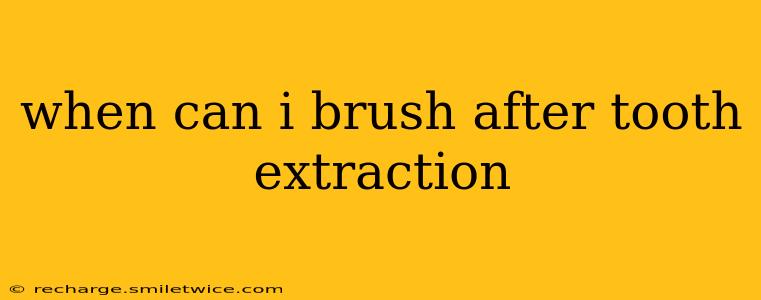When Can I Brush After Tooth Extraction? A Guide to Post-Extraction Oral Care
Undergoing a tooth extraction can be a bit daunting, and knowing how to care for your mouth afterward is crucial for a smooth recovery. One of the most common questions patients ask is: when can I brush after tooth extraction? The answer isn't a simple "24 hours" or "48 hours"—it's more nuanced than that and depends on several factors. This comprehensive guide will clarify the best practices for brushing your teeth after an extraction, ensuring a healthy and speedy healing process.
What Happens Immediately After Tooth Extraction?
Following a tooth extraction, a blood clot forms in the socket where the tooth was removed. This blood clot is absolutely essential for healing; it protects the bone and nerves beneath, preventing infection and promoting healthy tissue regeneration. Disturbing this clot can lead to a painful and potentially serious complication called dry socket (alveolar osteitis).
When Can I Start Brushing After a Tooth Extraction?
The general recommendation is to wait at least 24 hours before brushing near the extraction site. However, you can gently brush the rest of your teeth as normal. This helps maintain good oral hygiene and prevent bacteria from spreading to the extraction site.
Focus on brushing gently around the extraction site after the initial 24-hour period. Use a soft-bristled toothbrush and avoid any aggressive scrubbing. It's best to direct your brush away from the socket to avoid disturbing the clot.
How Should I Brush After a Tooth Extraction?
- Gentle is Key: Use a soft-bristled toothbrush and brush with incredibly light pressure. Think feather-light touches.
- Avoid the Extraction Site Directly: Focus on brushing the surrounding teeth, being very careful to avoid the extraction site.
- Rinse Gently: Instead of vigorous rinsing, you can gently rinse your mouth with saltwater (1/4 teaspoon of salt in 8 ounces of warm water) several times a day. This helps to keep the area clean and reduces the risk of infection.
- Don't Spit: Avoid spitting forcefully, as this can dislodge the blood clot.
What If I Experience Bleeding After Brushing?
A small amount of bleeding is normal in the initial days after extraction. However, if you notice excessive or prolonged bleeding, contact your dentist or oral surgeon immediately. They can assess the situation and provide appropriate advice or treatment.
What About Dry Socket?
Dry socket is a painful complication that occurs when the blood clot is dislodged from the extraction site. Symptoms include intense pain, a bad odor, and a visible empty socket. If you suspect you have dry socket, contact your dentist or oral surgeon right away. They may pack the socket with medication to promote healing and relieve pain.
Can I Use Mouthwash After Tooth Extraction?
Most dentists recommend avoiding mouthwash, especially alcohol-based mouthwashes, for at least 24-48 hours post-extraction. The alcohol can irritate the extraction site and potentially delay healing. If your dentist recommends a specific mouthwash, follow their instructions carefully.
When Can I Resume Normal Brushing?
Once the initial healing phase has passed (typically around a week), you should be able to resume your normal brushing routine, paying attention to the extraction site with extra gentle care for several more weeks.
Remember, every individual heals at a different pace. This guide provides general recommendations, and it's always best to follow your dentist's specific post-operative instructions. If you have any concerns or questions, don't hesitate to reach out to your dental professional. They can offer personalized advice tailored to your specific situation and ensure a smooth recovery.
